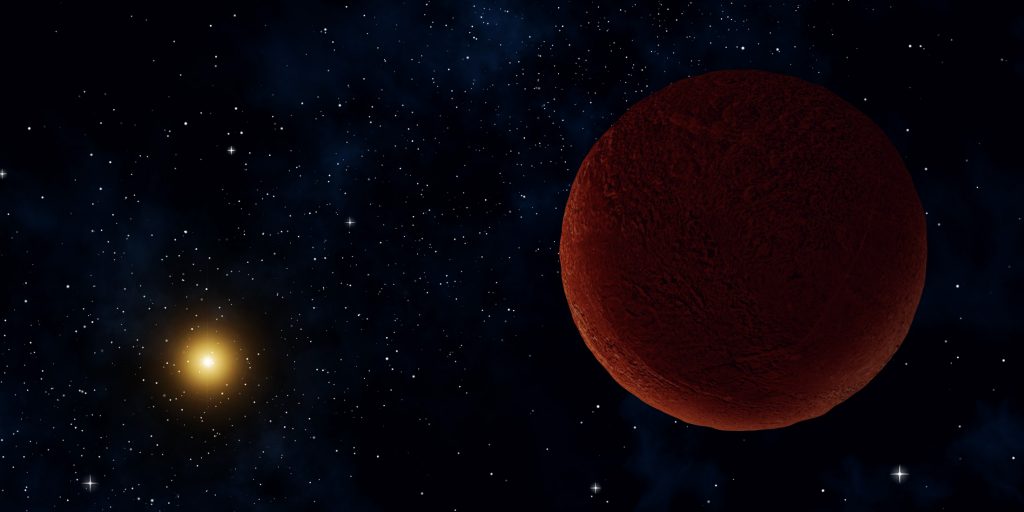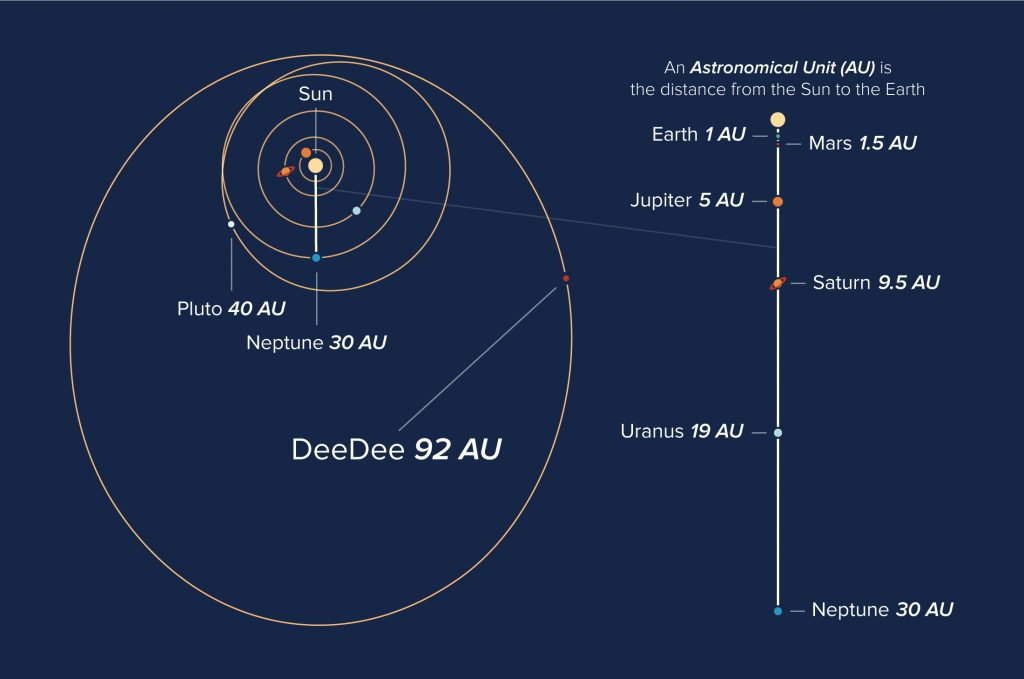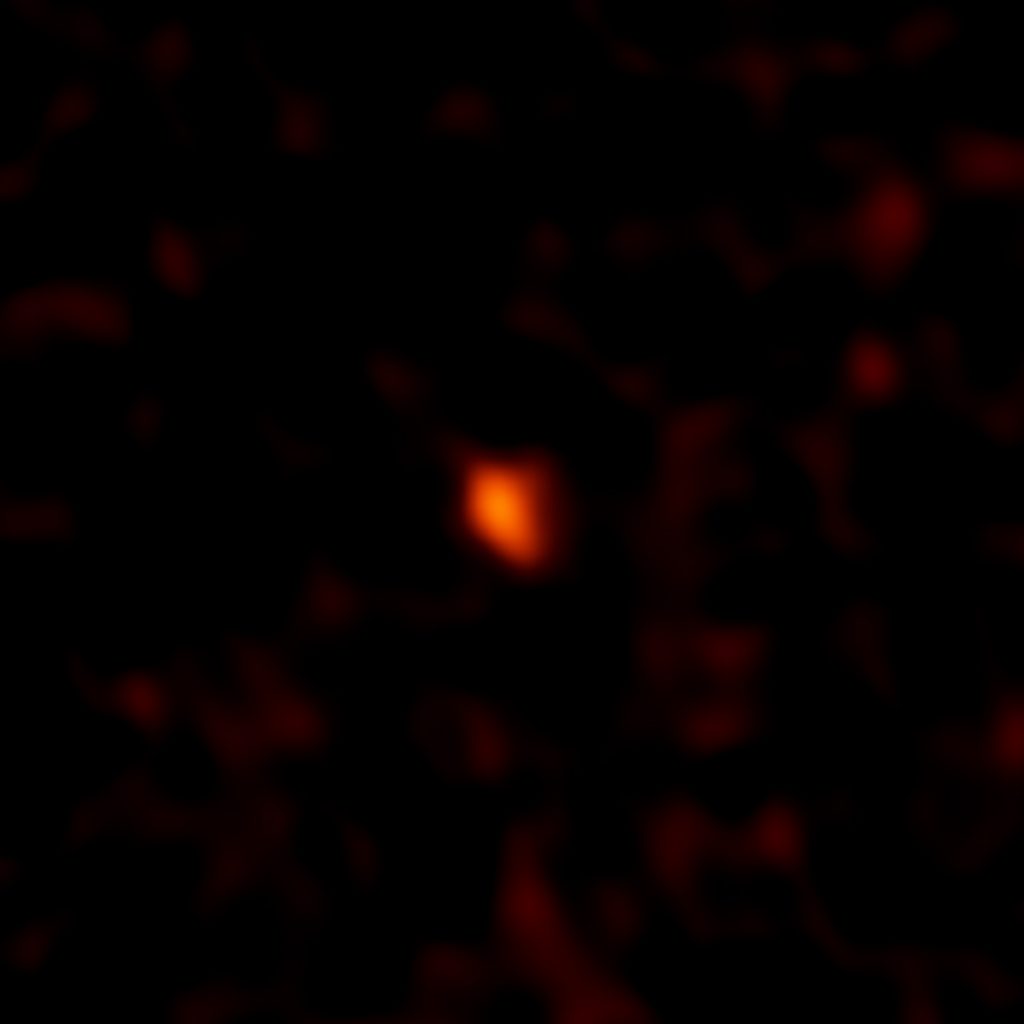Distant Object 'DeeDee' Makes the Dwarf Planet Grade

The solar system's dwarf-planet population is about to increase by one.
The far-flung object 2014 UZ224 — informally known as DeeDee, for "Distant Dwarf" — is about 395 miles wide (635 kilometers), new observations reveal. That means the frigid object probably harbors enough mass to be shaped into a sphere by its own gravity, entitling it to "dwarf planet" status, researchers said.
Astronomers first spotted DeeDee in 2014 using the optical Blanco telescope at the Cerro Tololo Inter-American Observatory in Chile (though they didn't announce the discovery until 2016). [Meet the Solar System's Dwarf Planets]

The initial Blanco observations allowed the discovery team to nail down DeeDee's orbit. The object loops around the sun on a highly elliptical path that takes more than 1,100 Earth years to complete; it's currently about 92 astronomical units (AU) from the sun but comes as close as 38 AU and gets as far away as 180 AU. (One AU is the average Earth-sun distance — about 93 million miles, or 150 million km.)
DeeDee is therefore the second most distant "trans-Neptunian object" with a confirmed orbit at the moment, researchers said. The dwarf planet Eris is more far-flung, though that's not always the case; Eris is currently about 96.5 AU from the sun, but it never gets more than 98 AU from Earth's star.
For perspective, Pluto orbits the sun at an average distance of 40 AU, with a maximum orbital distance of 49 AU.

But the Blanco data did not allow the discovery team — which was led by David Gerdes, an astronomer at the University of Michigan — to pinpoint DeeDee's size. While the researchers suspected that the object is a dwarf planet, they couldn't definitively determine from the optical observations whether DeeDee is relatively small and bright, or big and dark.
Breaking space news, the latest updates on rocket launches, skywatching events and more!
So Gerdes and his colleagues studied DeeDee with the Atacama Large Millimeter/submillimeter Array (ALMA), a system of powerful radio telescopes in Chile. ALMA picked up the faraway object's heat signature, which is directly proportional to its size.
"We calculated that this object would be incredibly cold, only about 30 degrees Kelvin, just a little above absolute zero," Gerdes said in a statement.

ALMA also measured DeeDee's brightness in millimeter-wavelength light, finding that the object reflects just 13 percent of the sunlight that hits it. That means DeeDee is about as dark as the dirt on a baseball infield, astronomers said.
Combining the ALMA data with the earlier Blanco observations allowed the team to figure out how big DeeDee is, a result they just published in the Astrophysical Journal Letters. (Some more perspective: DeeDee is larger than Saturn's spherical, geyser-spouting moon Enceladus, which has a diameter of 313 miles, or 504 km.)
The discovery and study of DeeDee (which has not yet officially been anointed a dwarf planet) shows that astronomers can probe the deep outer solar system and that similar techniques could potentially spot Planet Nine, the big world hypothesized to lurk out there undetected, researchers said.
"There are still new worlds to discover in our own cosmic backyard," Gerdes said. "The solar system is a rich and complicated place."
Follow Mike Wall on Twitter @michaeldwall and Google+. Follow us @Spacedotcom, Facebook or Google+. Originally published on Space.com.
Join our Space Forums to keep talking space on the latest missions, night sky and more! And if you have a news tip, correction or comment, let us know at: community@space.com.

Michael Wall is a Senior Space Writer with Space.com and joined the team in 2010. He primarily covers exoplanets, spaceflight and military space, but has been known to dabble in the space art beat. His book about the search for alien life, "Out There," was published on Nov. 13, 2018. Before becoming a science writer, Michael worked as a herpetologist and wildlife biologist. He has a Ph.D. in evolutionary biology from the University of Sydney, Australia, a bachelor's degree from the University of Arizona, and a graduate certificate in science writing from the University of California, Santa Cruz. To find out what his latest project is, you can follow Michael on Twitter.
